Iceland, a land of untamed beauty and geological wonders, offers travelers a unique opportunity to witness the Earth’s dynamic forces in action.
At the heart of this captivating island nation lies the Golden Circle, a circuit that weaves together geothermal marvels, historical significance, and natural grandeur.
In this comprehensive guide, we’ll embark on an in-depth exploration of the Golden Circle route, addressing its location, the time required to traverse it, its worthiness as a destination, the best time to visit, and the myriad of enchanting experiences it offers.
Let’s dive right in.
Where is the Golden Circle located in Iceland?
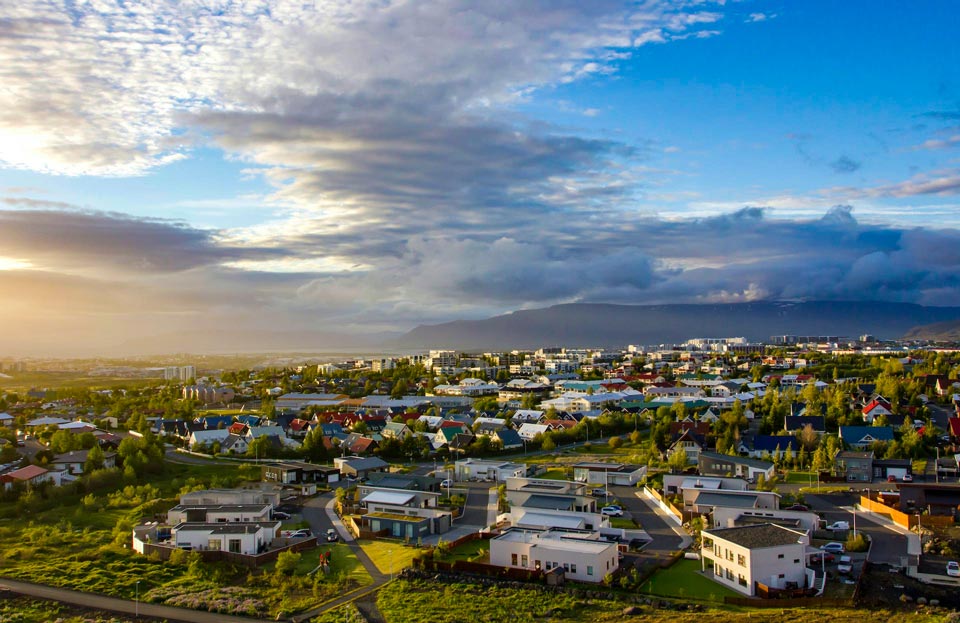
The Golden Circle is situated in the southwestern region of Iceland, a convenient stone’s throw from the capital city, Reykjavik.
This iconic route forms a roughly 300-kilometer loop, encompassing some of the country’s most celebrated natural and historical attractions.
The proximity of the Golden Circle to Reykjavik makes it an easily accessible day trip, yet its magnetic allure often encourages visitors to linger and savor the multiple facets of its splendor.
How Long Does It Take To Drive The Golden Circle Route?
The duration of a Golden Circle journey is a matter of personal choice. A non-stop drive around the circuit typically takes around 3 to 4 hours. However, the allure of this route lies in its attractions and the opportunities for exploration they present.
Many travelers opt for a more leisurely pace, dedicating a full day to this odyssey to absorb the magnificence of each stop and indulge in spontaneous detours along the way.
Is Golden Circle worth it?
Without a doubt, the Golden Circle is worth every moment of your time. It is a journey through a realm where geological spectacles, cultural significance, and raw natural beauty converge.
Each of its three primary destinations—Gullfoss, Geysir, and Þingvellir National Park—embodies the essence of Iceland.
Gullfoss, the “Golden Waterfall,” cascades dramatically into a rugged canyon.
Geysir, known as the “Great Geysir,” is the namesake of all geysers and offers a display of scalding water and steam eruptions.
Þingvellir National Park is not only the site of the world’s oldest parliament but also bears witness to the visible drift of the North American and Eurasian tectonic plates. It’s a symphony of geology, history, and natural beauty.
When should you visit the Golden Circle?
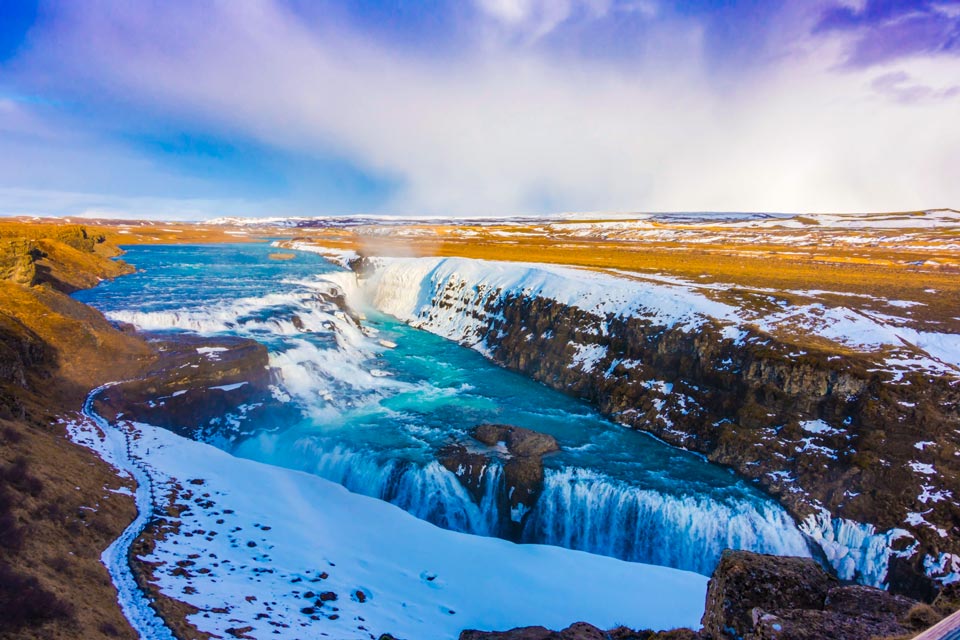
The ideal time to explore the Golden Circle hinges on your personal preferences and the experiences you seek.
Summer, spanning from June to August, offers long daylight hours, temperate weather, and lush landscapes. It’s the favored choice for those who desire unhurried exploration.
Winter, from November to February, blankets the route in a serene white, transforming it into a winter wonderland. This season also presents an excellent opportunity to witness the Northern Lights, adding a celestial dimension to the Golden Circle’s allure.
Spring and autumn offer a balance, with milder weather, fewer crowds, and a mix of seasonal beauty.
What is special about the Golden Circle Route in Iceland?
The Golden Circle’s uniqueness stems from its fusion of geological phenomena and historical significance. It’s a site where the Earth’s dynamic processes are on full display.
Gullfoss, the “Golden Waterfall,” showcases the might of the Hvita River as it plummets into a dramatic canyon.
Geysir, a geothermal hotspot, showcases the world-famous Great Geysir and Strokkur, both erupting with scorching water and steam.
Þingvellir National Park, a UNESCO World Heritage site, is historically significant as the birthplace of the Alþingi, the world’s oldest parliament. It’s also where the North American and Eurasian tectonic plates dramatically diverge, forming a vivid scar on the Earth’s surface.
What is included in the Golden Circle Route?
The Golden Circle, a triad of captivating attractions, encapsulates the essence of Iceland.
Gullfoss Waterfall
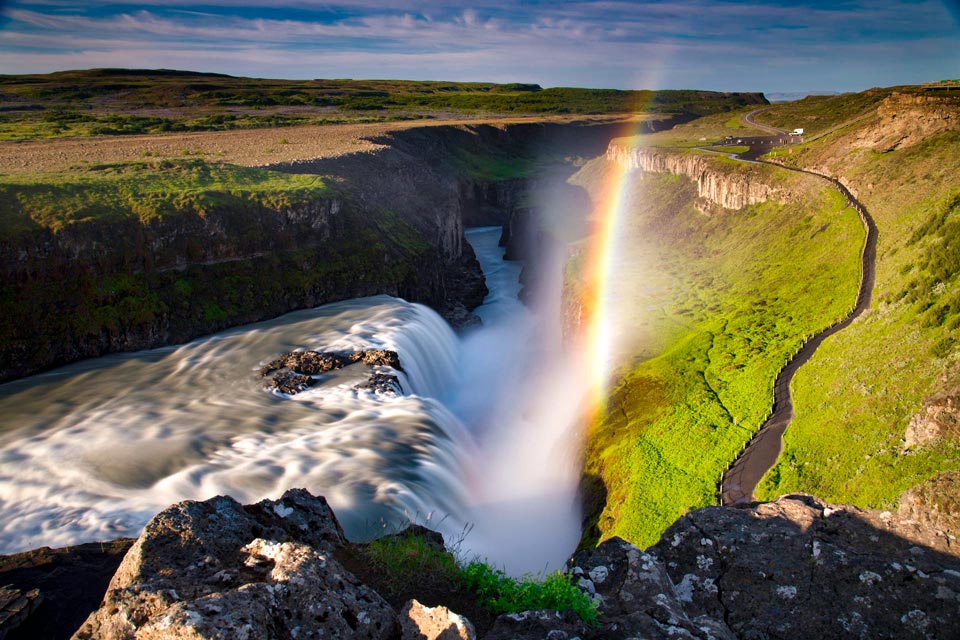
Nestled within the heart of Iceland’s Golden Circle, Gullfoss Waterfall stands as a testament to nature’s raw grandeur and an embodiment of the power of geological processes.
This captivating cascade offers a captivating journey into the Earth’s tumultuous past, an adventure awaiting all who seek the extraordinary.
The Geological Symphony
Gullfoss is a masterclass in the geological symphony that has sculpted Iceland’s landscape over millennia.
The Hvita River, fed by the Langjokull glacier, embarks on a relentless journey before succumbing to the laws of gravity, orchestrating this breathtaking performance of water and rock.
Layers of Drama
The waterfall’s visual appeal lies in its dual cascades. A short, tumultuous fall crashes into a rugged crevice before plunging into a deep abyss, creating a mesmerizing layering effect.
The interplay of light and water mesmerizes the onlooker, painting a vivid picture of nature’s complex artistry.
Unearthly Surroundings
Gullfoss is enshrouded in a captivating aura, surrounded by basalt columns that add a touch of the otherworldly to this terrestrial marvel.
The stark contrast between the dark basalt and the frothing, crystalline waters intensifies the visual impact, creating a landscape reminiscent of myth and legend.
Seasonal Metamorphosis
One of the waterfall’s most intriguing features is its seasonal metamorphosis. In winter, Gullfoss dons a frozen cloak, while spring heralds a thaw that swells the river’s flow.
This dynamic shift ensures that no two visits are the same, offering a unique encounter with the forces of nature.
A Note of Caution
While Gullfoss beckons with its beauty, a note of caution is essential. The viewing platforms provide a safe vantage point to admire the spectacle, but venturing too close can be perilous.
The water’s icy embrace and the slippery rocks remind us that nature’s grandeur should be revered from a respectful distance.
Geysir
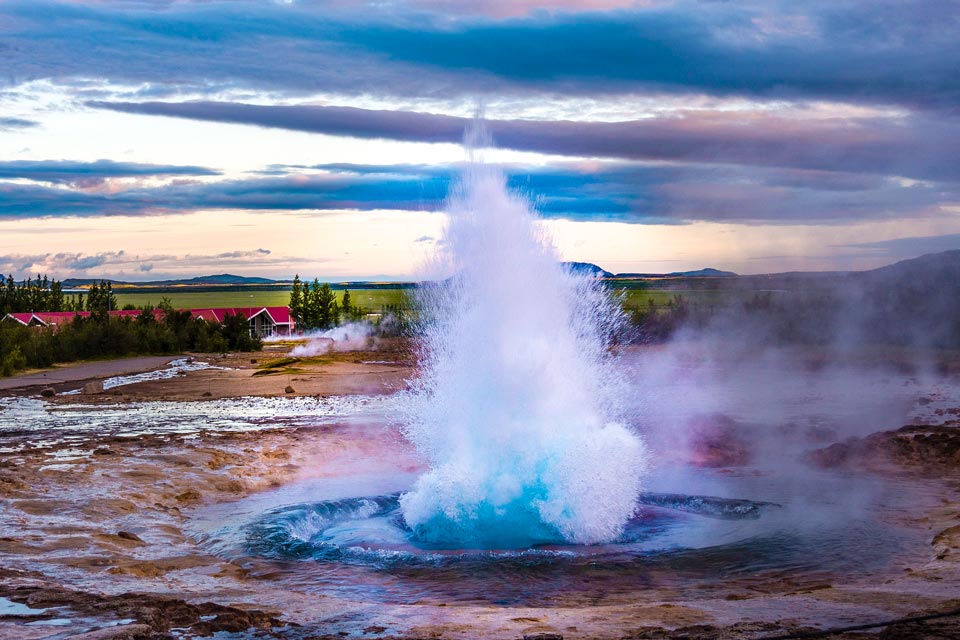
The enigmatic Geysir, nestled within Iceland’s Golden Circle, stands as a natural marvel of extraordinary proportions.
This bubbling cauldron of geothermal activity is a testament to the Earth’s geological wonder and a symphony of steam and water, captivating all who venture to witness its majestic performance.
A Geological Ballet
Geysir’s primary protagonist, Strokkur, takes center stage with an eruption frequency that dances to an irregular rhythm.
This water-column ballet, sometimes as high as 40 meters, defies expectations, leaving spectators in awe.
The choreography relies on the accumulation of subterranean pressure, a delicate balance that dictates when the curtains of scalding water will rise.
Thermal Orchestra
Underneath this natural stage lies a complex orchestra of geological instruments, including subterranean chambers filled with superheated water.
As heat seeps from Earth’s molten core, water infiltrates the crevices, creating a volatile mix of magma and liquid.
The rising thermal energy orchestrates the geysers’ dynamic show, fueling their captivating performances.
Ephemeral Elegance
The thrill of watching Geysir’s eruption is a lesson in patience, as the spectacle is as ephemeral as it is stunning.
Visitors must remain vigilant, cameras at the ready, for these natural crescendos often last only a few seconds before returning to a calm state.
Natural Artistry
Beyond Strokkur’s virtuoso displays, Geysir’s surroundings are a canvas painted with vibrant hues of algae and mineral deposits, contrasting with the stark, otherworldly terrain.
The dramatic landscape serves as an ever-changing backdrop to this geological masterpiece.
Respecting Nature’s Temperament
While Geysir’s eruptions may tempt daring onlookers to draw near, it is imperative to heed the warnings.
The water’s searing temperature and unpredictable eruptions underscore the importance of respecting nature’s temperament.
Maintaining a safe distance ensures that you remain an observer, not a participant, in this untamed symphony of the Earth’s forces.
Þingvellir National Park

Nestled within the embrace of Iceland’s Golden Circle, Þingvellir National Park is a geological wonderland, offering a unique window into the tectonic tapestry of our planet.
This extraordinary site, where Earth’s plates collide and history converges, beckons explorers on a journey through time and nature’s splendor.
Tectonic Theater
Þingvellir’s paramount allure lies in its status as a UNESCO World Heritage Site and a testament to continental drift.
Here, the North American and Eurasian tectonic plates engage in a geological tango, creating a rift valley adorned with deep fissures and craggy cliffs.
Witnessing these colliding titans is akin to watching the Earth’s heartbeat in slow motion.
Silfra’s Subaquatic Symphony
The park’s intricate hydrogeological network is exemplified by Silfra, a submerged chasm filled with glacial meltwater.
This crystal-clear aquatic fissure offers a peerless diving experience, allowing enthusiasts to explore the aqueous boundary between two continents with unparalleled visibility.
Historical Crossroads
Beyond its geological treasures, Þingvellir resonates with historical significance. It is the birthplace of the world’s oldest parliament, the Alþing, founded in 930 AD.
The ancient Logberg (Law Rock) served as the parliamentary stage, where disputes were settled and laws enacted under the open sky, a political theater with a geological backdrop like no other.
The Echoes of Oxararfoss
The park’s landscape is adorned with captivating features, including the ethereal Oxararfoss waterfall, where the Oxara River tumbles over ancient lava fields.
Its whispers in the quietude of nature’s embrace are a reminder of the relentless passage of time and the sculpting power of water on stone.
Conservation and Respect
Þingvellir National Park, a crown jewel of Icelandic natural heritage, underscores the importance of environmental preservation.
Visitors are encouraged to tread lightly and leave no trace, ensuring that the park’s geological and historical wonders endure for generations to come.
These three iconic destinations define the heart and soul of the Golden Circle. However, there are a few other noteworthy attractions that you should consider.
Kerid Crater
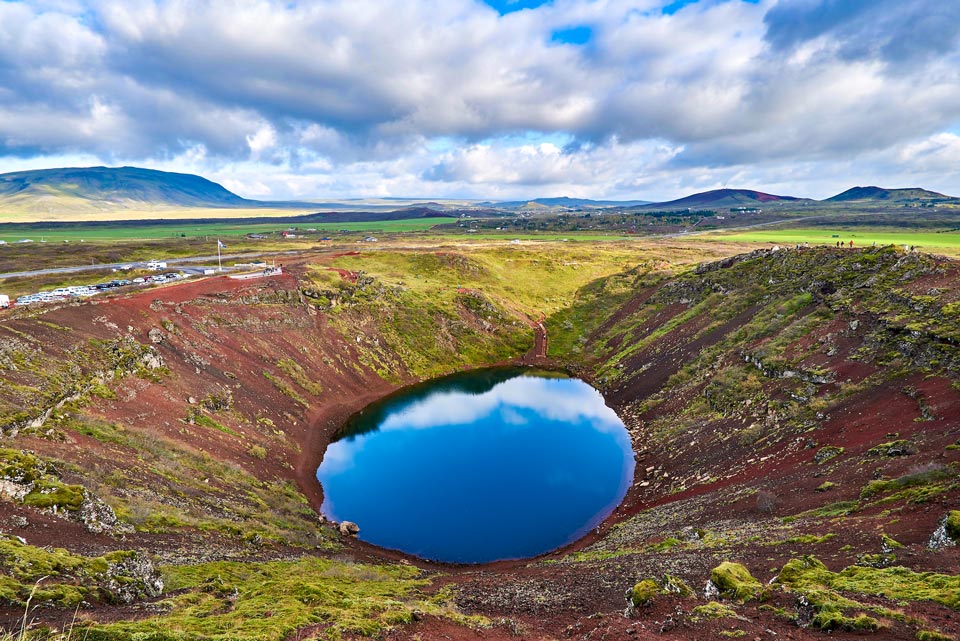
Nestled within Iceland’s famed Golden Circle, the enigmatic Kerid Crater stands as a testament to the Earth’s volatile history.
This captivating caldera, with its striking colors and otherworldly allure, offers a unique opportunity to explore the planet’s geological secrets.
The Crater’s Enigmatic Origins
Kerid is what geologists refer to as a volcanic maar, a formation resulting from a volcanic explosion within a body of water.
The crater, measuring 270 meters in diameter, presents a mesmerizing palette of reds and blues, a testament to the minerals embedded in the rock.
It’s a geological canvas that tells a story of Iceland’s tumultuous past.
Lake of Azure Waters
One of Kerid’s most captivating features is its cerulean lake, ensconced within the caldera’s depths.
The vivid blue hue is a result of the interaction between the water and the minerals in the volcanic rock.
Visitors can take a staircase down into the crater, offering a unique perspective of this pristine aquatic gem.
Stratified Walls
Kerid’s walls reveal intricate layers of volcanic rock, providing a geological timeline etched in stone.
The stark juxtaposition of colors and textures is a visual delight, inviting contemplation of the planet’s transformative processes.
A Haven for Botanical Life
Kerid’s unique microclimate fosters the growth of vibrant green vegetation against the backdrop of the crater’s stark beauty.
It’s a haven for various plant species, creating a harmonious contrast between life and geological forces.
Respecting Nature’s Artistry
While Kerid’s allure is undeniable, it is imperative to approach this geological masterpiece with care.
Visitors are encouraged to stay on designated paths and respect the environment’s fragility, preserving this natural wonder for future generations.
Secret Lagoon
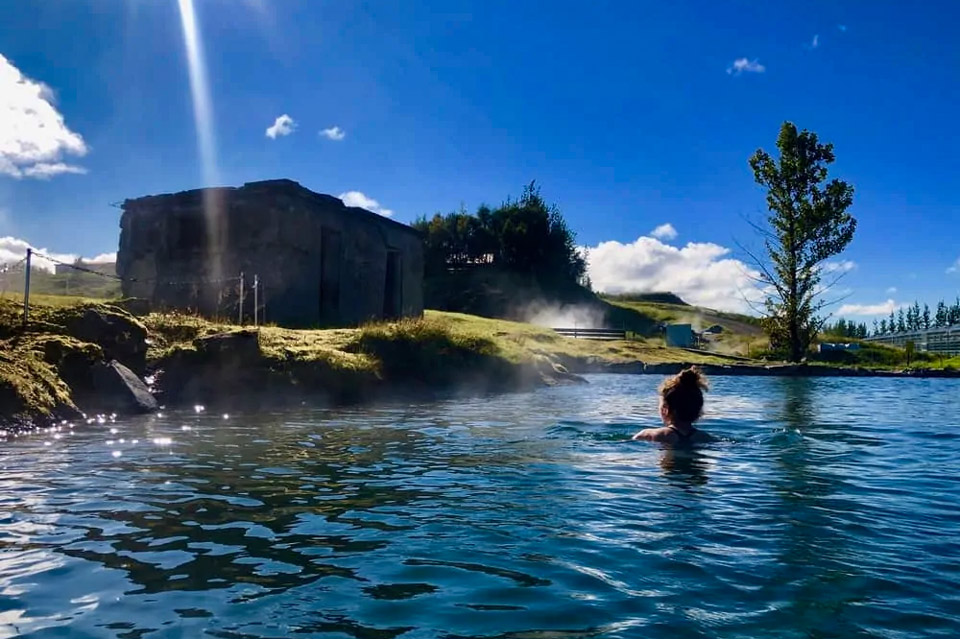
Nestled amidst the awe-inspiring landscapes of Iceland’s Golden Circle, the Secret Lagoon is a hidden oasis of tranquility, a natural geothermal hot spring that offers visitors an opportunity to immerse themselves in a timeless Icelandic tradition.
This secluded gem invites you to step away from the ordinary and embrace the extraordinary.
Geothermal Elegance
The Secret Lagoon’s waters, heated by the Earth’s natural geothermal activity, create a warm, inviting atmosphere, even in the depths of winter.
Steam rises gently from the water’s surface, creating an ethereal aura that beckons the weary traveler to unwind.
Mineral-Rich Soak
What sets the Secret Lagoon apart is not just its captivating ambiance but also the healing properties of its mineral-rich waters.
The lagoon’s geothermal source infuses the water with silica, renowned for its skin-soothing qualities, offering visitors a natural spa experience like no other.
Surrounded by Nature’s Grandeur
This lagoon’s setting is nothing short of breathtaking.
The surrounding area is a tableau of Icelandic beauty, with lush vegetation, dramatic hills, and the occasional burst of geothermal activity.
It’s a place where you can immerse yourself in the lap of nature while staying comfortably warm.
Historical Echoes
Beyond its natural splendor, the Secret Lagoon holds a piece of Icelandic history. It was the country’s first swimming pool, dating back to 1891.
Bathing here is akin to taking a dip in a living museum, where past and present converge.
The Importance of Respect
To ensure that the Secret Lagoon remains a sanctuary of serenity, it’s vital for visitors to respect the environment.
Staying on designated paths and adhering to guidelines ensures that this natural wonder endures for generations to come.
Does the Golden Circle route include the Blue Lagoon?
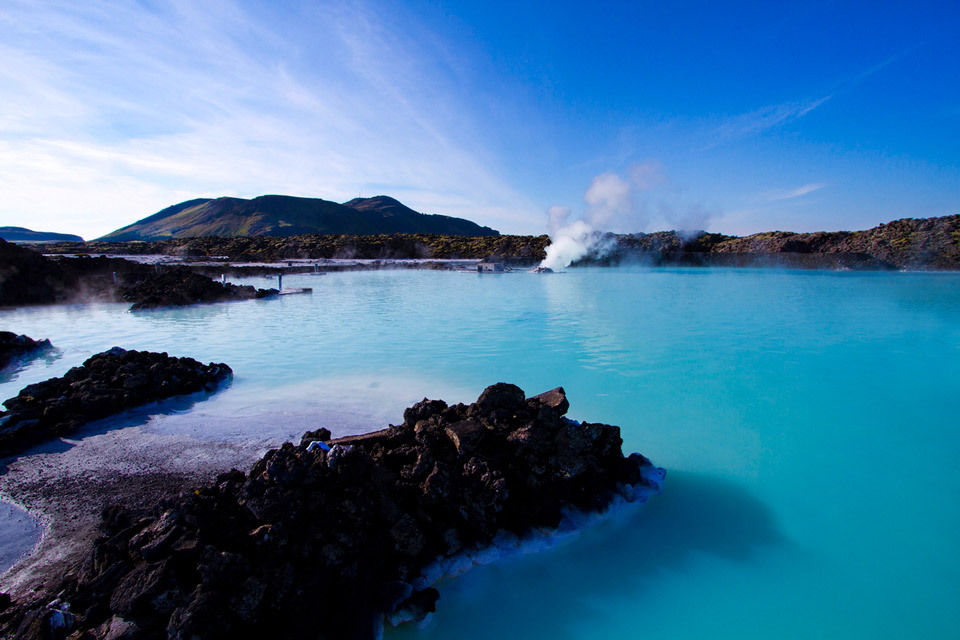
The Blue Lagoon, although a popular attraction, is not part of the Golden Circle circuit. Located near Keflavik International Airport, it is a separate destination renowned for its geothermal, mineral-rich waters.
However, combining a visit to the Blue Lagoon with a Golden Circle tour can create a comprehensive Icelandic experience.
This pairing allows you to immerse yourself in the lagoon’s healing waters and then explore the Golden Circle’s natural and historical wonders, offering the best of both worlds.
Can you do the Golden Circle Route in one day?

The Golden Circle’s close proximity to Reykjavik makes it perfectly feasible to complete the circuit in a single day.
Its well-maintained roads and strategic location facilitate easy access. However, the true question isn’t whether you can do it in a day, but how much you wish to embrace its offerings.
A more extended visit allows for in-depth exploration and the opportunity to delve deeper into the captivating surroundings.
Those who extend their journey may discover hidden treasures and appreciate the attractions at a leisurely pace, unveiling additional natural wonders along the way.
Where to stay when touring the Golden Circle in Iceland?

For travelers wishing to explore the Golden Circle at a more leisurely pace, several accommodation options are available in the vicinity.
Reykjavik, Iceland’s capital, offers a range of hotels, guesthouses, and hostels to suit various budgets.
Another option is to stay closer to the Golden Circle route itself, in places like Laugarvatn or Selfoss, where you’ll find cozy guesthouses and hotels with hot springs and beautiful landscapes as a backdrop.
Camping is also a popular choice for those seeking a more rustic experience. Whichever option you choose, the Golden Circle’s attractions are never far away.
Can you see the Northern Lights in Golden Circle Iceland?
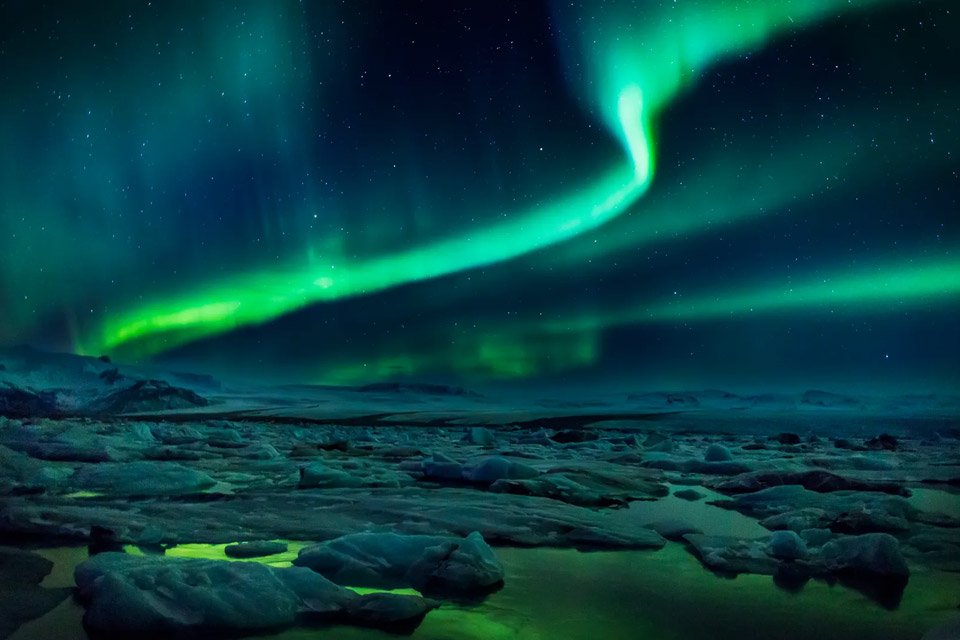
While the Golden Circle doesn’t guarantee Northern Lights sightings, it serves as a gateway to these celestial wonders. Iceland, with its pristine night skies, offers a prime location for observing the Northern Lights.
The best time to witness this ethereal display is from late September to early April when the nights are longest and darkest.
The open landscapes surrounding the Golden Circle provide an excellent chance to encounter this natural light show, making it a perfect addition to your Icelandic adventure.
Can I do the Golden Circle route on my own?
Independence is at the core of the Golden Circle experience. Travelers have the freedom to explore the circuit independently by driving their own vehicle or renting one locally.
The well-marked roads and abundance of tourist facilities ensure accessibility for solo adventurers.
Guided tours, led by knowledgeable experts, are also available for those who prefer a structured experience enriched with local insights.
Whether you opt for the autonomy of self-guided exploration or the guidance of an expert, the Golden Circle will unfold its enchantment before you.
What should I wear when visiting the Golden Circle?
Iceland’s unpredictable climate demands a well-thought-out wardrobe. Dressing in layers is essential to adapt to ever-changing conditions.
tart with a moisture-wicking base layer to keep you dry, followed by an insulating layer for warmth. Your outer layer should be waterproof and windproof to shield you from sudden rain or chilly winds.
Sturdy waterproof hiking boots are a must to navigate uneven terrain, and don’t forget warm socks and gloves to combat the cold.
A cozy hat and scarf provide extra warmth, particularly during the colder months.
What should I take with me when visiting the Golden Circle?
For a successful Golden Circle expedition, a few essentials should always be on your checklist.
These include a good-quality camera to capture the mesmerizing scenery, a reusable water bottle to stay hydrated, and high-energy snacks to keep you fueled throughout your journey.
It’s also prudent to carry a basic first-aid kit with essential medical supplies and any personal medications you may need.
Additionally, a map or GPS device will be invaluable for navigation through this captivating route.
Conclusion
In conclusion, the Golden Circle in Reykjavik is a tapestry of geological wonders and historical significance.
It encapsulates the essence of Iceland, offering travelers an encounter with its heart and soul.
Whether you opt for a day trip or a more extended adventure, the Golden Circle promises an unforgettable journey through a land of unparalleled natural beauty and cultural significance.
Don’t miss the opportunity to explore this geological and historical masterpiece in the heart of Iceland.
